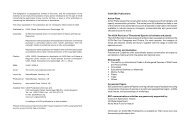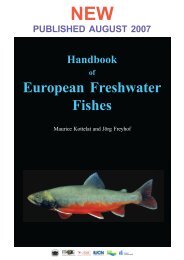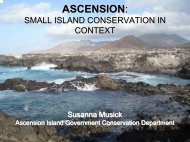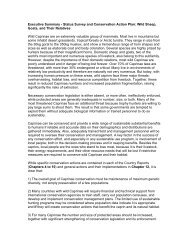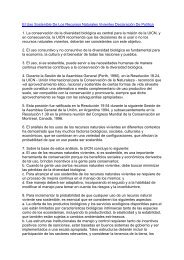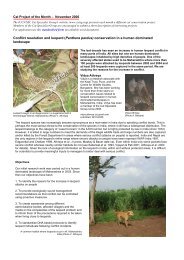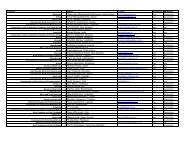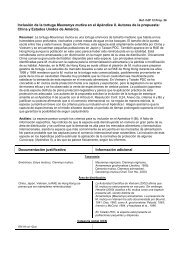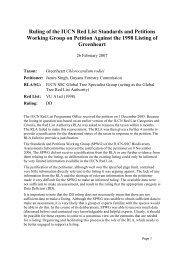Planning education to care for the earth - IUCN Knowledge Network
Planning education to care for the earth - IUCN Knowledge Network
Planning education to care for the earth - IUCN Knowledge Network
You also want an ePaper? Increase the reach of your titles
YUMPU automatically turns print PDFs into web optimized ePapers that Google loves.
<strong>Planning</strong> <strong>education</strong> <strong>to</strong> <strong>care</strong> <strong>for</strong> <strong>the</strong> <strong>earth</strong>• <strong>the</strong> urgency of decisions <strong>to</strong> change <strong>the</strong> spectrum of social fac<strong>to</strong>rswhich influence environmental problems.A prime need was <strong>to</strong> motivate public opinion leaders <strong>to</strong> become interested inenvironmental problems, <strong>to</strong> make a habit of thinking of action in favour of<strong>the</strong> environment as a priority, and <strong>to</strong> work <strong>to</strong>wards solutions of some of <strong>the</strong>problems. Confidence had <strong>to</strong> be established in Fundación Natura and itsEDUNAT project.The environmental crisis facing <strong>the</strong> country demanded that <strong>education</strong> andcommunication be combined.• The first step in planning EE was <strong>to</strong> identify and define <strong>the</strong>environmental problems, <strong>the</strong>ir causes and manifestations, <strong>the</strong>effects, <strong>the</strong> possibilities of solution - scientific, legal,technological, financial or o<strong>the</strong>r - and <strong>the</strong> degree of urgency.• The next step was <strong>to</strong> determine <strong>the</strong> ways in which EE couldcontribute <strong>to</strong> solving <strong>the</strong> problems. Should <strong>the</strong> environmental crisisbe dramatized? Should individuals be blamed <strong>for</strong> <strong>the</strong>ir habits,behaviour and attitudes <strong>to</strong>wards <strong>the</strong>ir surroundings? Shouldindividuals be warned of <strong>the</strong> danger of exposure <strong>to</strong> environmentalhazards? Should new behaviour and habits <strong>to</strong>wards nature besuggested?• Definition of <strong>the</strong> target groups was important. Who was responsible<strong>for</strong> environmental damage and who were <strong>the</strong> victims? Who wouldlead and how could responsibility be shared? Where were <strong>the</strong>targets <strong>for</strong> EE?• Finally, <strong>the</strong> project managers had <strong>to</strong> determine <strong>the</strong> <strong>for</strong>ms andmethods EE should adopt . The decision was <strong>to</strong> avoid models basedon rigid umbrella-type <strong>the</strong>ories, <strong>to</strong> work within existing socioecologicalsituations, and <strong>to</strong> develop various patterns of EEappropriate <strong>to</strong> differing contexts.Systems and <strong>the</strong>mesThree systems can be distinguished:• long-term (10 years): policies and goals which created a framework<strong>to</strong> tackle <strong>the</strong> priority environmental problems;• medium-term (five years): specific <strong>education</strong> programmes andprojects <strong>to</strong> deal with <strong>the</strong> different social causes and fac<strong>to</strong>rs ofselected environmental problems within <strong>the</strong> framework of <strong>the</strong>policies established under <strong>the</strong> first system;• short-term (up <strong>to</strong> two years): micro-projects in <strong>the</strong> fields of<strong>education</strong>, communication and in<strong>for</strong>mation <strong>to</strong> deal with <strong>the</strong> socialfac<strong>to</strong>rs surrounding one or two specific environmental problems.156



